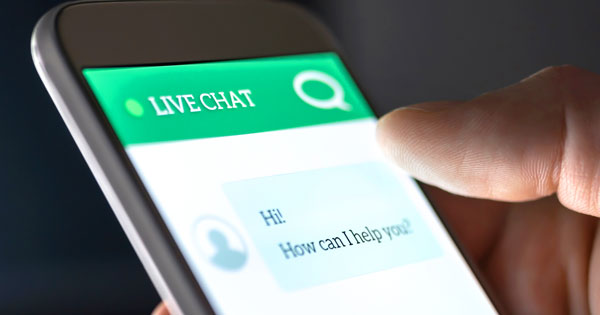Since Facebook launched bots in Messenger back in 2016, the number of leads, sales, and talent recruited by businesses has increased exponentially. It’s been four years since then, and the landscape for how businesses harness the power of marketing automation through bots has changed.
Different Marketing Entry Points
As we roll into 2021, brands can continue to engage consumers through several entry points, which are the automation marketing solution aimed to help businesses reach and grow their audience on autopilot. Entry points can direct consumers to a brand’s chatbot from traffic sources like comments on auto-replies, ads, website plugins, and social media.
Billy Shipp, head of marketing at Chatfuel, a chatbot provider integrated with Facebook and Instagram, has seen three use cases that work really well with automation and messaging when brands engage with customers: FAQ automation and customer support, lead generation, and product recommendation.
FAQ Automation and Customer Support
“This is where customers have questions and want them answered, then you just have a bot automatically respond,” Shipp said. “There are top questions such as where you’re located and what your business hours are, and most customers want access quickly. But bots can help take this to a deeper level and many other questions such as return policies and shipping times, or common product questions.”
Chatbots offer three immediate benefits to customer service teams: faster response times, better agent utilization and data collection on what customers need. Even if you have an FAQ page on your website which answers most of these questions, sometimes consumers are in a hurry and do not want to read through paragraphs of information. A quick response from a chatbot satisfies the customer, gives them more knowledge about your brand, and saves a sales associate from stopping what they are doing to answer the phone.
Product Recommendations
“Sometimes a customer will come to a brand and see too many options to choose from. Chatbots make it easy to have a conversation and move forward from there to find a product that works for the shopper,” Shipp said. “We’ve seen tremendous sales increases with this bot. It works across many different products, and beauty brands are using this as well.”
LEGO is just one of the many different international brands that works with Chatfuel, and they saw big success when they integrated a product recommendation chatbot on their website. Before the chatbots, there was an ongoing problem where consumers would go to the site to get a gift, and they would be overwhelmed with hundreds of different options. The bot made it easier and asked the customer questions such as “Is this a gift,” “Is it for a boy or girl,” “What is the age range,” and “How much do you want to spend?” With these questions, the bot is able to make product recommendations, which ultimately made the purchasing decision much easier for consumers.
Lead Generation
“This is where brands use Facebook and Instagram ads to drive viewers into conversations with a bot,” Shipp said. “It works really well and is unique to Facebook. Facebook has click-to-Messenger ads, so when a user interacts with an ad, they can start chatting immediately and are directed to a bot.”
There is also a functionality called Comments Autoreply. If a brand has a post on Facebook and a user comments on the post, the bot can reply directly to the consumer and start a conversation. Shipp says this is something Chatfuel is also working on with Instagram because it’s a great way to start a conversation with customers and get that personalized experience when they are not in-store. It feels very organic and consumers can feel comfortable responding.
What Not to Do
If your brand is thinking of integrating a bot into your business, Shipp advises that you be completely honest with your customers about how they are speaking with a chatbot and not make them seem like a real human being. “Do not try and trick people into thinking they are talking to a person. Brands may think it’s a good idea, but it never works. Customers are smart and they will know right away, and that ruins the experience and the relationship with the customer because they won’t trust the interaction,” he said.
It’s Completely Affordable
We know what you’re thinking: Chatbot integration sounds expensive and time consuming, but in actuality, you can get started with Chatfuel quickly, and for free. You can build a simple bot in minutes, test it for 50 users, and then decide if you want to upgrade to the Pro plan, which starts at $15/month. Or, if you prefer, you can get the Chatfuel team to build a custom bot for your business for just $299. That bot can be set up for either FAQ automation and customer support, lead generation, or product recommendation, depending on your business’s needs.
For businesses that do not have the internal resources to build and manage a bot themselves, Chatfuel has a quickstart program which starts at $300 for three months of service where they build a chatbot for you with either FAQ automation and customer support, lead generation, or product recommendation, depending on your business’ needs.

